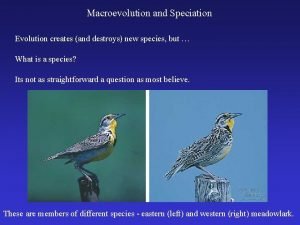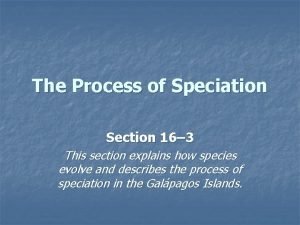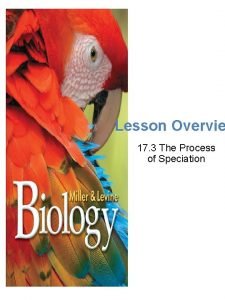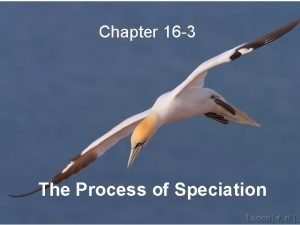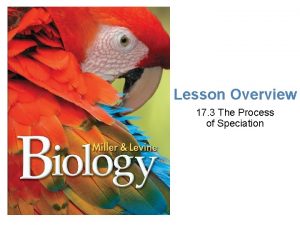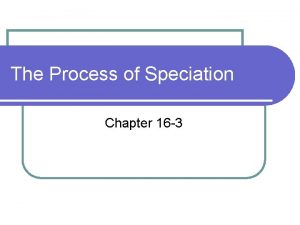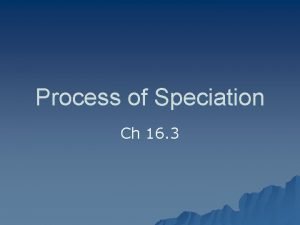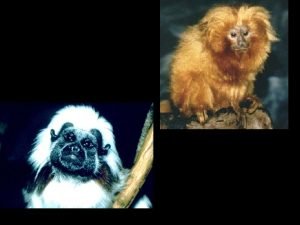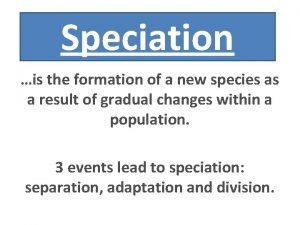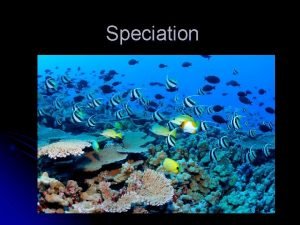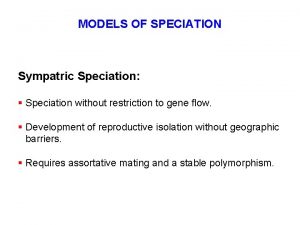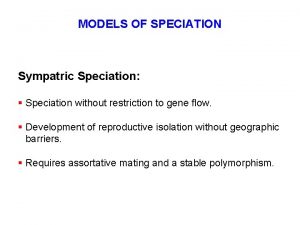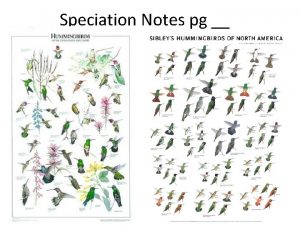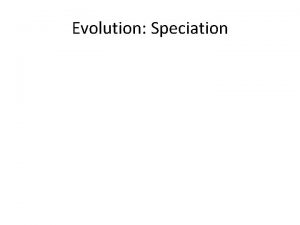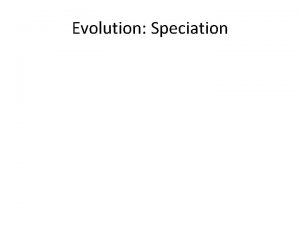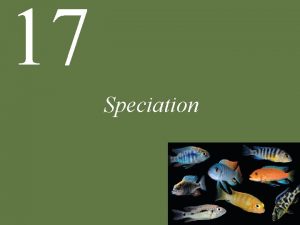The Process of Speciation Chapter 16 3 I











- Slides: 11

The Process of Speciation Chapter 16 -3

I. Speciation l A. Changes that lead to the formation of a new species l B. Species: individuals who can successfully reproduce. 1. Species share the same gene pool l 2. Speciation occurs when individuals can no longer share the same gene pool l 3. Isolation often drives speciation l

II. Isolating Mechanisms l A. Reproductive Isolation: When individuals can no longer interbreed and produce fertile offspring l 1. 3 types of isolation:

l a) Behavioral Isolation l 1) Changes in courtship rituals cause individuals to not interbreed (mate) l i- Ex. Changes in song or dance so that members don’t like the song o recognize it.

Reproductive Isolating Mechanisms


l b) Geographic Isolation 1) A population gets physically separated by geographic barriers (mountains, rivers, etc. ) l 2) Individuals can no longer have physical contact and interbreed. l

Geographical Barriers Although they are in the same region, the white tailed antelope squirrel inhabits desert to the north of the canyon, while Harris’s antelope squirrel (above) has a more limited range to the south.

Geographic Barriers Archey’s frog (top) has no webbing between the toes and is found in forested areas away from water. Hochstetter's frog (bottom) has partial toe webbing and can be found in stream margins.

l c) Temporal Isolation 1) Individuals begin to reproduce at different times or have different mating seasons l 2) When some are ready to reproduce others are not. l 3) Interbreeding is not successful l

 Isolating mechanism
Isolating mechanism Section 16-3 the process of speciation
Section 16-3 the process of speciation Temporal isolation
Temporal isolation Section 16-3 the process of speciation
Section 16-3 the process of speciation Speciation process
Speciation process Speciation process
Speciation process Section 16-3 the process of speciation
Section 16-3 the process of speciation 16-3 the process of speciation
16-3 the process of speciation Example of biological species
Example of biological species Taxonomic species concept
Taxonomic species concept Speciation or the formation of new species is
Speciation or the formation of new species is Sympatric speciation example
Sympatric speciation example
